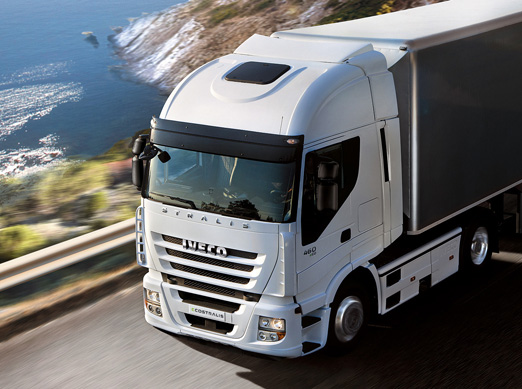Ministers are preparing to outline proposals to allow the new HGVs to operate so that they can carry more freight.
Currently lorries on British roads are permitted to drive with a maximum load weight of 44 tonnes – but this would be increased to 48 tonnes as part of the new plans.
The Department for Transport plans are aimed at cutting down the number of journeys needed to transport goods amid concerns that population growth and an increased demand for online shopping is leading to more and more lorries on our roads.
HGVs covered 17.4 billion miles on Britain’s roads last year which is a rise of around 13 per cent compared to statistics from the mid 1990s.
Road safety groups have opposed the plans for bigger lorries as they may pose a threat to pedestrians and cyclists when turning.
However previous trials have shown that larger vehicles would cut emissions and could reduce the number of accidents by taking more lorries off the road.
As part of the reforms the maximum length of a semi-trailer – a trailer without a front axel pulled by a lorry unit – would increase from 13.6 metres to 15.6 metres.
The longer trailers would be able to carry two more rows of pallets or at least three rows of supermarket goods cages on each journey.
What are the proposed changes?
Maximum load weight would increase from 44 to 48 tonnes under the new plans;
Trailer lengths would also be extended by two metres from 13.6 to 15.6 metres;
48,000 tonnes of CO2 could be saved every year;
33.5 million miles of travel could be cut every year.
An official trial started in 2012 and was meant to last 15 years but now the Department for Transport is proposing to end it early.
A consultation on the new plans opened today and will run until January 4.
The change would allow the transportation of heavier containers between freight trains and lorries only, making it easier to shift cargo between rail depots and road distribution centres.
Grant Shapps, the transport secretary, said that trials of longer trailers “clearly show the benefits for business and the environment”.
The consultation document says: “Some organisations have identified that allowing 6-axle articulated lorries to be operated at 48 tonnes during domestic intermodal journeys would improve efficiency and support rail freight”.
“This could be permitted for repetitive container loads that travel along a set route. Increasing the load capacity for each lorry involved could reduce the number of lorry movements to service each train, with the operations liable to happen frequently, feeding into scheduled trains operating on one or more days a week.”
The Netherlands and Norway are the only European countries that have a higher limit than the proposed 48 tonnes – with a 50-tonne limit.
Link here to the original Daily Mail article.

